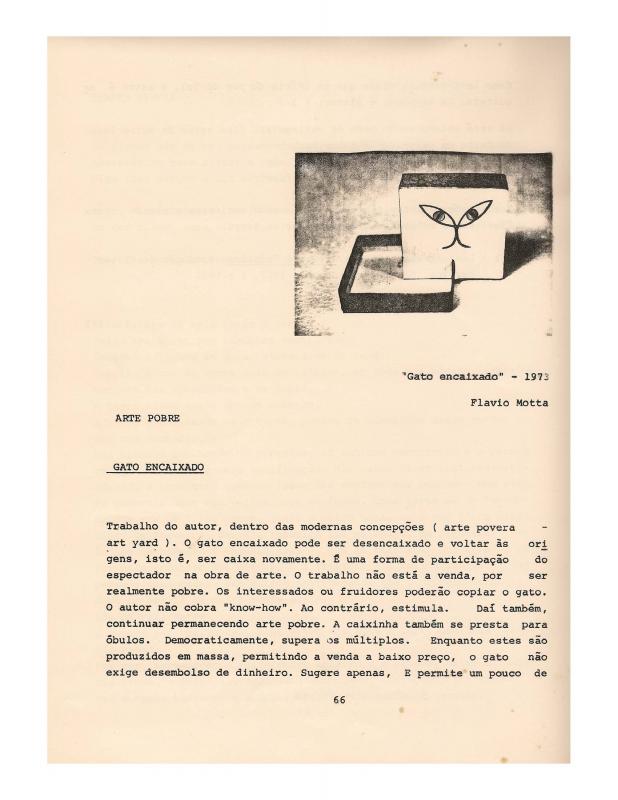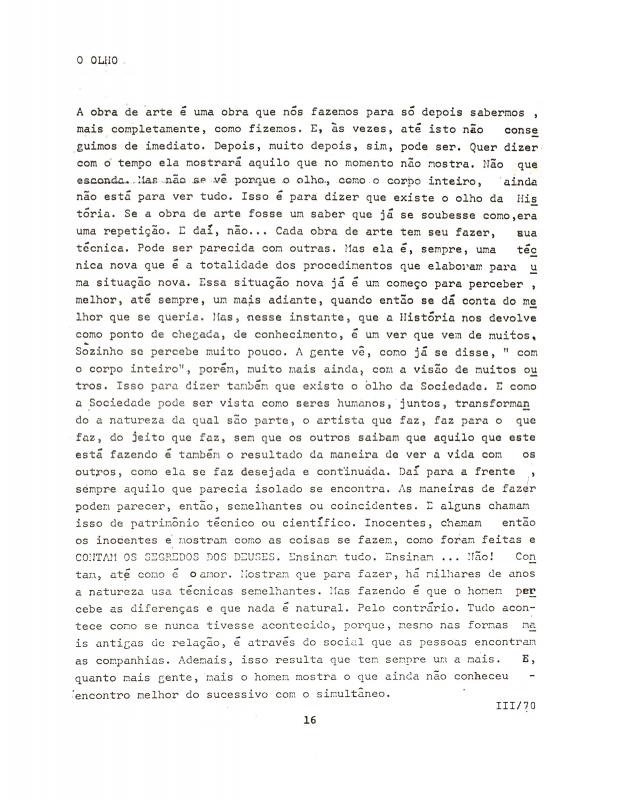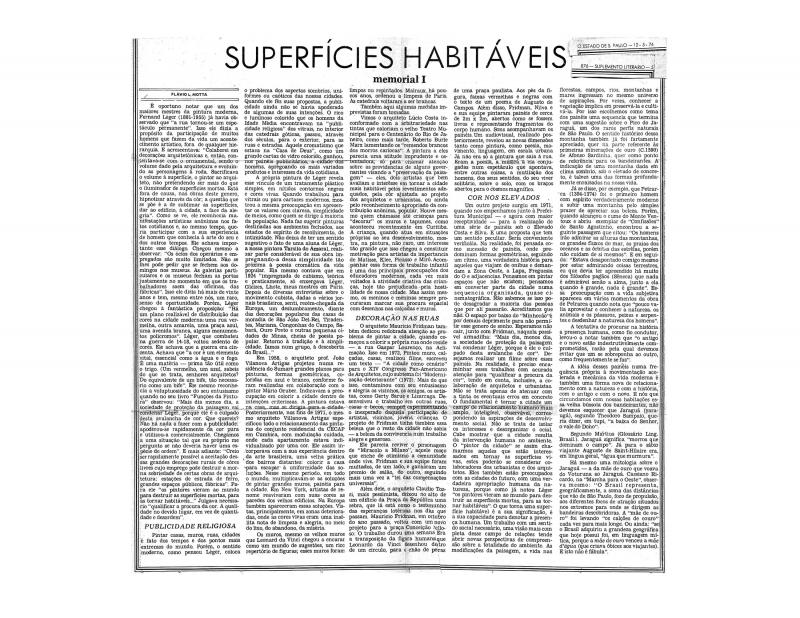This fundamental text is a discussion of how waste materials are later turned into raw materials in “marginalized” areas on the outskirts of the city. Awareness of this phenomenon, along with the use of popular and everyday images, was central to some artistic production of the time even when that production eschewed the term “trash aesthetic.” In other words, the uplifting of “the precarious” is not what’s at stake in this artwork. What is, rather, is making the most intelligent use possible of the materials that come to individuals by chance in peripheral countries.
Professor, historian, and critic Flávio [Lúcio Lichtenfelds] Motta (b. 1923) was an influential member of the faculty at the Faculdade de Arquitetura e Urbanismo da Universidade de São Paulo (FAU-USP). He was responsible for introducing art history and the history of aesthetics into the curriculum. In 1967, he and artist Nelson Leirner proposed the first parade of flags and banners, producing works based on what was called “literatura de cordel” from northeastern Brazil. The first parade, which took place on Brasil Avenue in São Paulo, used flags that had been confiscated by the repressive military forces; the second, which took place in Praça General Osório in Rio de Janeiro in early 1968, included artists like Hélio Oiticica and Rubens Gerchman. In 1967, Motta proposed a project whereby visitors to the IV Salão do Distrito Federal in Brasília would make seals.
For additional text by Motta, see “Arte cinética e pop arte” (ICAA digital archive doc. no. 1111367); “Arte na cidade” (doc. no. 1110633); “Arte na cidade” written with Marcello Nitsche (doc. no. 1110634); “Arte pobre: gato encaixado” (doc. no. 1111369); “Desenho e emancipação” (doc. no. 1111178); “As esculturas de plástico de Mario Cravo Junior” (doc. no. 1111368); “O olho” (doc. no. 1111374); “Superfícies habitáveis: memorial I” (doc. no. 1110637); “Trabalho e linguagem” (doc. no. 1111375); and an untitled text [“Vimos a paisagem enquadrada e as árvores caídas (…)”] (doc. no. 1111210).










